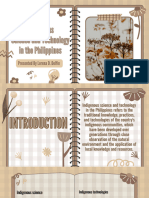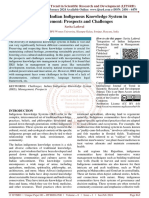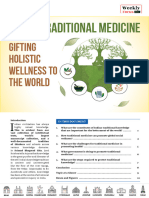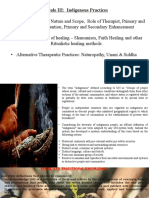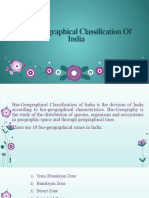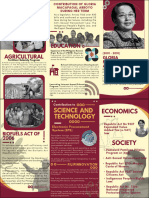100% found this document useful (1 vote)
61 views4 pagesModule 4
The document discusses the significance of traditional knowledge in engineering, medicine, and agriculture, highlighting indigenous practices that have been developed over generations. It emphasizes the importance of sustainability, holistic health, and community-centered approaches in these traditional systems. The conclusion advocates for the integration of traditional knowledge with modern practices to address contemporary challenges such as climate change and food security.
Uploaded by
koena.srCopyright
© © All Rights Reserved
We take content rights seriously. If you suspect this is your content, claim it here.
Available Formats
Download as PDF, TXT or read online on Scribd
100% found this document useful (1 vote)
61 views4 pagesModule 4
The document discusses the significance of traditional knowledge in engineering, medicine, and agriculture, highlighting indigenous practices that have been developed over generations. It emphasizes the importance of sustainability, holistic health, and community-centered approaches in these traditional systems. The conclusion advocates for the integration of traditional knowledge with modern practices to address contemporary challenges such as climate change and food security.
Uploaded by
koena.srCopyright
© © All Rights Reserved
We take content rights seriously. If you suspect this is your content, claim it here.
Available Formats
Download as PDF, TXT or read online on Scribd
/ 4





